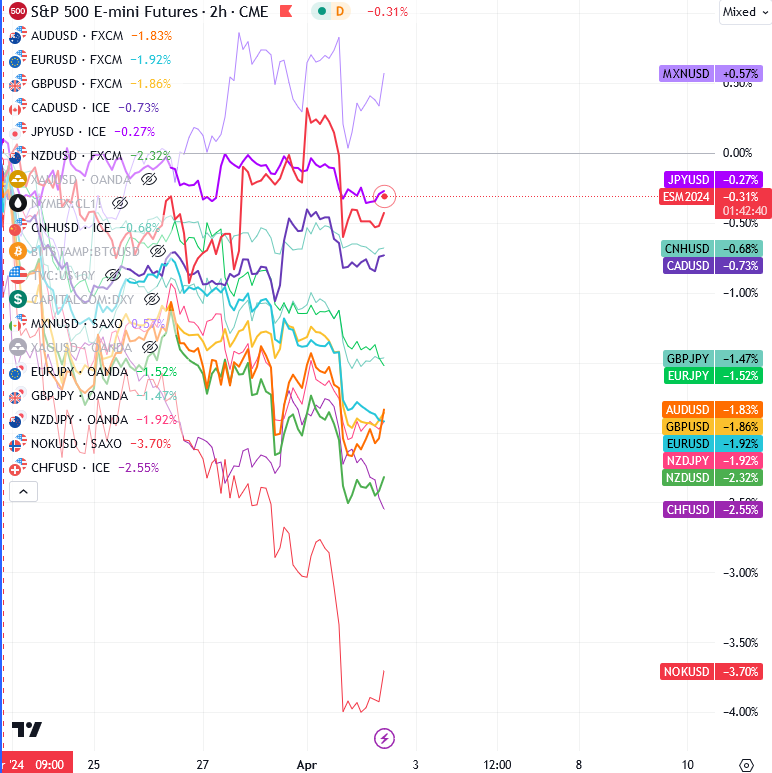I hope your Easter holidays have been full of joy. I had the pleasure of spending mine with my family and took the opportunity to go on some rejuvenating hikes.
Turning our attention to the financial markets, the dollar has shown a rebound in value, with the DXY index surpassing its February highs, indicating a resurgence of dollar strength. This trend comes as a result of recent sessions, where both US and US Treasury bonds experienced falls. A key factor contributing to the dollar's strength is the recent ISM US Manufacturing PMI report, which marked a return to expansion territory for the first time since November 2022, recording a figure of 50.3 against the 48.5 expected.
This suggests that the US economy may be on the road to recovery, potentially maintaining current inflation rates for a period longer than the Federal Reserve's projections and consequently postponing any anticipated rate cuts.
However, nonfarm payrolls (NFP) data due out this Friday will be critical in assessing the true state of economic health.
Against the backdrop of dovish stances by global central banks since the Swiss National Bank's rate cut on March 21, the Norwegian krone (NOK) emerges as the weakest link, along with the Swiss franc (CHF), the dollar New Zealand (NZD) and the euro. (EUR) follows closely. This dynamic suggests that if the dollar continues its upward trajectory, these currencies deserve close observation for potential moves and short opportunities against the USD, after a pullback, of course.
Turning our attention to the financial markets, the dollar has shown a rebound in value, with the DXY index surpassing its February highs, indicating a resurgence of dollar strength. This trend comes as a result of recent sessions, where both US and US Treasury bonds experienced falls. A key factor contributing to the dollar's strength is the recent ISM US Manufacturing PMI report, which marked a return to expansion territory for the first time since November 2022, recording a figure of 50.3 against the 48.5 expected.
This suggests that the US economy may be on the road to recovery, potentially maintaining current inflation rates for a period longer than the Federal Reserve's projections and consequently postponing any anticipated rate cuts.
However, nonfarm payrolls (NFP) data due out this Friday will be critical in assessing the true state of economic health.
Against the backdrop of dovish stances by global central banks since the Swiss National Bank's rate cut on March 21, the Norwegian krone (NOK) emerges as the weakest link, along with the Swiss franc (CHF), the dollar New Zealand (NZD) and the euro. (EUR) follows closely. This dynamic suggests that if the dollar continues its upward trajectory, these currencies deserve close observation for potential moves and short opportunities against the USD, after a pullback, of course.
grega
US ISM M. PMI
Currency correlations












